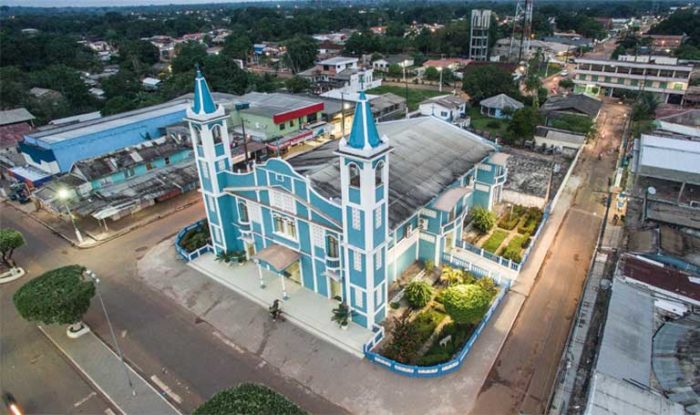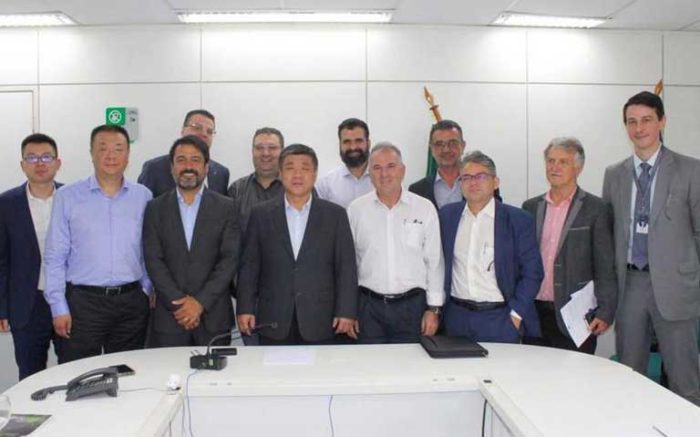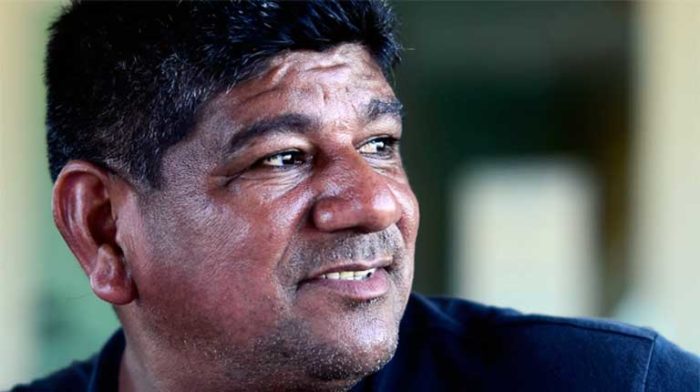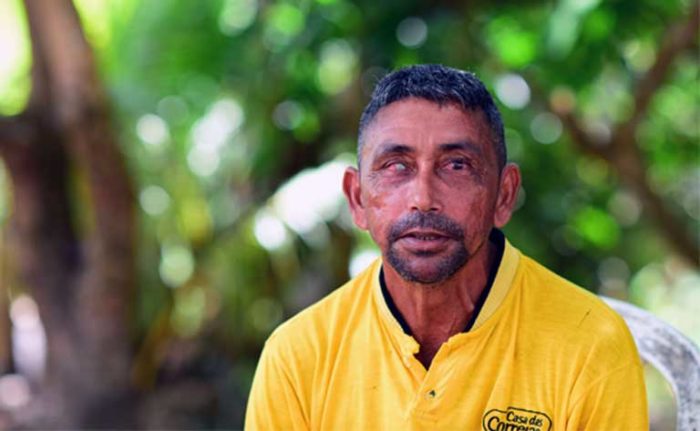Potássio do Brasil, a mining company; Autazes municipal authorities; the federal and Amazonas state governments; and large-scale soy growers all want one thing: to open a potash mine in the town of Autazes that would supply soy producers with Brazilian fertilizer, so as not to buy and pay for imported potash. All stand to profit.
There’s just one major roadblock: the potassium deposits are on indigenous land, and the mining company started off on the wrong foot in 2013 by digging exploratory wells in secret, without getting indigenous permission to dig on their land.
Years of acrimonious conflict and legal battles followed. The municipality of Autazes includes 12,000 Mura Indians among its citizens, most of whom live in one of the 20 indigenous reserves that have been officially demarcated or are in the process of being demarcated. They fear the potash mine’s social and environmental repercussions.
They have successfully stalled the US$2.5 billion mining project up to now. But under the government of Jair Bolsonaro, the possibility that the potash mine could go forward without indigenous consultation — as required by international law — is becoming a looming possibility
Mongabay sent a reporting team to Brazil’s Amazonas state in 2019 to cover an ongoing conflict between indigenous people and a company that wants to put a gigantic potash mine within and next to their Amazon reserves. This is Part 1 of a 2 part story. You can read the original article here.

AUTAZES, Amazonas, Brazil — As boats dock at the river port, disembarking passengers can’t miss a large billboard proclaiming what Autazes municipal authorities cherish as their region’s greatest boon: “Land of Milk and Potash.” While early settlers brought in the cattle and buffalo that supplied the milk, geologists only discovered huge deposits of potash ore in this part of the Amazon basin in 2010.
The discovery opened a new era of economic promise for Autazes, which lies west of the Madeira River, one of the main Amazon River tributaries (see map). Potash is an important fertilizer used in huge amounts by industrial agribusiness to replenish exhausted soils. Brazil is already the world’s leading exporter of several important agricultural products, including soy, but its farmers would find it difficult to keep up production or survive without potash.
However, Brazil currently must import about 70 percent of the potash it consumes, according to Brazilian Vice President, General Hamilton Mourão, who is keen to promote agribusiness in Brazil’s north. That’s why he’s turned his attention to this remote municipality — a video from March 2019 on his Twitter account has him proclaiming a key government priority: the need to get large-scale potash mining in Autazes underway.
There is another good business reason for opening a big mine in Autazes: the potash could be transported to the nation’s main soy-producing region at a highly competitive price.
By a stroke of good luck for agribusiness and the mining company, the potash reserves are located beside the Madeira River, a waterway used to transport soy from Brazil’s largest soy-producing state, Mato Grosso, to the river ports of Itacoatiara and Santarém for transhipment down the Amazon to transatlantic vessels which move the beans by sea to China and Europe.
“Instead of traveling empty back up the Madeira River [to Mato Grosso], as happens today, the barges could go stacked full of potash,” explains Guilherme Jácome, project development director at Potássio do Brasil, the company planning to open the potash mine.
This logistic windfall, while slashing transport costs, also brings environmental advantages, Jácome added. If we take advantage of the empty vessels, “the world would emit about 508,000 fewer tons of carbon dioxide each year, equivalent to the annual emissions of 100,000 cars.”
The Amazonas state government and Potássio do Brasil jointly announced the launch of the mega-potash mine in September 2010, a plan requiring an investment of US$2.5 billion. If it goes ahead, it will turn life upside down in Autazes, a small Amazonian municipality of just 37,000 inhabitants — benefiting some, and harming others.

Indigenous concerns
Though kicked off in 2010, the project has suffered delays, though it still benefits from enthusiastic local and national boosters. Jácome told Mongabay that the plan is to open two wells, each seven or eight meters (23 to 26 feet) across, leading down into an underground mine about 800 meters (2,600 feet) underground. A potash plant, a Madeira River port, and a 130 kilometer (81 mile) electrical transmission line linking the operation into the national grid are also vital components.
At first, all went well for Potássio do Brasil. The company quickly obtained a license to drill exploratory wells from the National Department of Mining Research (DNPM), now renamed the National Mining Agency (ANM).
In 2013, it began prospecting. It was then that indigenous communities woke up to the project. The municipality of Autazes includes 12,000 Mura Indians among its citizens, most of whom live in one of the 20 indigenous reserves that have already been demarcated or are in the process of being demarcated in the region.
The Mura realized that the threat presented by the potash mine was of a far greater magnitude than what had come before in clashes with cattle and buffalo ranchers. The indigenous group discovered that Potássio do Brasil was drilling exploratory mines on land they had always considered theirs, and without seeking permission. They were galvanized into action and managed, with the support of the Public Federal Ministry (MPF), a group of independent litigators, to halt development in order to carry out a full consultation process with the communities, as required by international law.

The allure of profit
Powerful movers and shakers in Autazes continue to push for a go-ahead for the stalled mining project. And while much of the initial entrepreneurial buzz has subsided, most business boosters remain hopeful. Autazes Mayor Andreson Cavalcante, is one of them.
Cavalcante was busy preparing for the annual cattle fair when the Mongabay team sought an interview, but after a long monologue on local radio, he made space for us in his crowded schedule. Surrounded by a coterie of local politicians, all men, he was articulate and appeared well-informed: “The company tells us that, during the implementation period of eight years, the project will create 1,500 direct jobs, along with 5,000 indirect jobs.” Before the project was blocked, he added, it had already given a big boost to the local economy, increasing commerce and creating jobs.
He is cautiously confident the mine will go forward: “The project brings benefits to the municipality, the state, the country and agribusiness.” Cavalcante said. The company has drawn up plans for properly managing the mine, he explained, so he remains convinced that there won’t be “too many problems.”

He also noted recent speculation that the mine may soon attract Chinese investment, an exciting prospect for a small Amazon town. In January, representatives of CITIC, the giant Chinese state-owned investment company, met with leading members of the Amazonas state government to discuss possible involvement. Local people also report visits from Chinese delegations. If a deal is clinched, Chinese dollars would flow through Potássio do Brasil. Jácome later also confirmed Chinese interest but said, with the project at a standstill, nothing has been settled.
If and when the project gets underway, Potássio do Brasil will be required to pay a tax known as the Financial Compensation for Mineral Resources Exploitation (Compensação Financeira pela Exploração de Recursos Minerais, or CFEM), offering a big windfall to government coffers. The CFEM rate charged for potassium production is fixed at 3 percent of the mining company’s net earnings — a considerable sum to be divided between the various levels of administration: 65 percent going to the municipality, 23 to the state, and 12 percent to the national government.
The promise of these tax benefits is hugely attractive to local politicians as well as the business community, but there are downsides to the mining project, apart from the harm it might bring to regional indigenous communities.


The threat of pollution
Environmental impacts could be intense — especially controversial now as public outcry in favor of Amazon conservation grows both within Brazil and the international community.
Potash ore in the Autazes reserve comes in the form of sylvinite, a sedimentary rock composed of potassium chloride and sodium chloride (ordinary kitchen salt). “In the process of separating out the potash, you need to dissolve this salt,” explains geologist Juan Doblas. “The problem is that this results in a huge quantity of concentrated brine, which can do immense environmental damage in a region like Amazônia.”
Mura Indians living in communities close to the planned mine site are worried: “No one knows where these residues will go because they [the company] won’t talk to us,” says Aldinelson Pavão, the tuxaua (chief) of Urucurituba village.
Another tuxaua, Sosa, from Trincheira village, shares this concern. “Sun will melt the salt and rain as well,” he says. “And these are two things we have a lot of here: sun and rain. If the salt leaches into the river, our fish will die,” fish that are vital to local lives.

Edna Pitarelli, the Manaus coordinator of the Catholic Church’s Missionary Indigenous Council (CIMI), says that other indigenous communities in the region are on the alert. Contamination is particularly worrisome in the várzea (river floodplains), she notes, as the river rises by ten meters (33 feet) or more during the rainy season, falling by the same amount during the dry season. “This means that it’s easy for contamination to spread as the waters mingle during the rainy season. This is why indigenous villages as far away as Careiro da Várzea [90 kilometers (56 miles) from Autazes] have joined resistance to the mine.”
Potássio do Brasil confirms that it would generate about 480,000 tons of cooking salt and 120,000 tons of sand a month as a by-product of its mining operation, but it added that the Indians needn’t worry, as their engineers have eliminated contamination risk.
Jácome is confident that the residue will be safely returned underground. “The few areas [in the mine] that will have contact with the salt will be sealed beforehand, so no contact will occur between the [waste] and the soil or underground waters.”

Indigenous distrust
With memories still fresh of the catastrophic mining disasters in Mariana in 2015 and Brumadinho in 2019, many indigenous people are sceptical of mining company reassurances. “We’ve seen dams breaking and doing a great deal of harm to the people living by them,” said Francisco Oliveira, the tuxaua of Taquara village. “People don’t feel safe and they don’t get help. That’s why we feel worried about this company coming here and causing these impacts on us too.”
Fernanda Bragato, who has a doctorate in law from the Vale do Rio dos Sinos University in south Brazil, contributed to a study into the Autazes mine’s risk, carried out in partnership with Jocelyn Getgen Kestembaun, lecturer at the Benjamin Cardozo School of Law in New York, along with three other researchers. Bragato warns that problems can begin before any soil is moved, when the company lodges thousands of workers on the local mining site. “They can bring in infectious and contagious diseases, as well as causing social problems, such as an increase in drug consumption, violence, prostitution and child sexual exploitation.”
According to the study, subsidence, caused by the removal of extensive mineral deposits, can occur decades or even centuries after the closure of a potash mine. There have been cases all over the world of mines collapsing, leaving great craters. A recent case occurred in 2014 when a potash mine collapsed in the Perm region in Russia’s Urals. The suddenly appearing sinkhole measured 122 x 125 meters (400 x 410 feet) and was believed to be more than 75 meters (246 feet) deep.

The trouble with F&M
There may be other reasons for apprehension surrounding the Autazes potash mine in particular. Potássio do Brasil is owned by Forbes & Manhattan (F&M), a private merchant bank with headquarters in Toronto, Canada. F&M specializes in creating companies to develop new mining projects around the world.
Bragato’s risk study cites a 2014 report by RepRisk ESG Business Intelligence which judged F&M’s Aviemore Anthracite Coal Project in KwaZulu-Natal, South Africa to be one of the ten most controversial mining projects in the world. The report noted that after a two-week strike for better wages, two workers were shot dead by security guards while other employees were driven into the forest.
F&M has been linked to other problematic mining projects in Brazil. In 2015, people in the town of Jacobina in Bahia state accused Yamana Gold, another Canadian company that acquired the Jacobina mine from F&M in 2006, of failing to adhere to Brazil’s environmental and health laws. F&M developed the mine from 1996 to 2006, before Yamana’s purchase.* Speaking at a public hearing, residents attested to hearing and breathing problems, caused by excessive noise and air pollution. Another citizen complained: “We are drinking harmful waste from the factory treatment center because, when their tank overflows, it all goes into the dam across the Itapicuruzinho River.”
Still another very controversial F&M project is the proposed but stalled Belo Sun goldmine — which would be the largest ever in Brazil. It is planned for the Xingu River basin, not far from the Belo Monte dam, a hydroelectric project that has already caused great harm to local communities. The NGO, Socioenvironmental Institute (ISA) reports that at the end of the mine’s life it could leave behind two gigantic mounds of chemically active sterile waste.

As in Autazes, Belo Sun’s mining license has been held up while authorities carry out the free, prior and informed consultation of affected indigenous communities, as required by the International Labour Organization’s Convention 169, of which Brazil is a signatory.
Bragato believes the problems Brazil’s mega-mining projects face today are common to many developing countries. “While they bring growth to the host nations, many multinationals are implicated in serious and recurrent human rights violations and environmental damage throughout the world,” she said. “And only rarely can the affected people hold the companies responsible and get reparations, even if it is widely known that they have violated rights.” Concerns have risen only higher as Brazilian President Jair Bolsonaro pushes forward legislation to open indigenous lands to industrial mining.
So it is that many Mura Indians stand vigilant against the potential social and environmental risks posed by the Autazes potash mine. Although in its early stages it seemed the project would steam ahead without consultation with affected communities, the indigenous group fought and managed to win breathing space in which to consider, in a calm and measured fashion, whether or not they want the mine.
The story of the indigenous people’s ongoing struggle will be told in Part 2 of this series.
Banner image caption: The Trincheira indigenous village which would be impacted by potash mine waste should the pollutants get into local rivers. Image by Mauricio Torres.
Correction: Mongabay originally reported erroneously that Yamana is owned by F&M. In fact, F&M developed the Jacobina mine from 1996 to 2006, then sold it to Yamana, an independent company.

